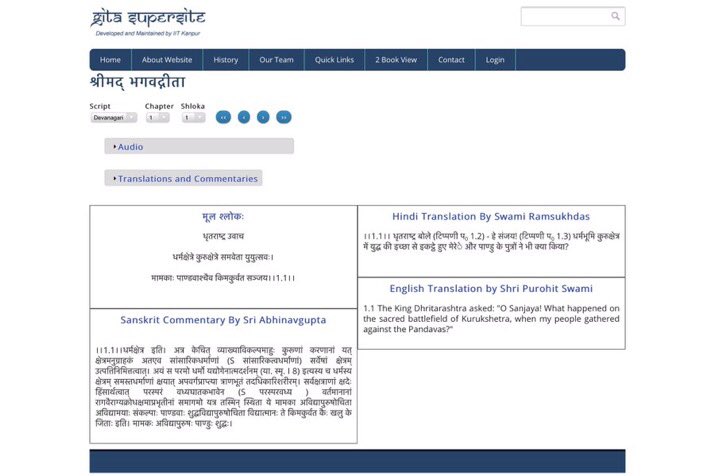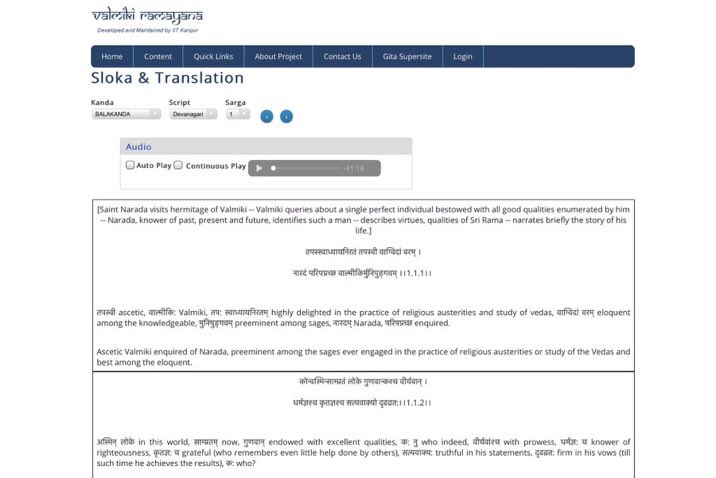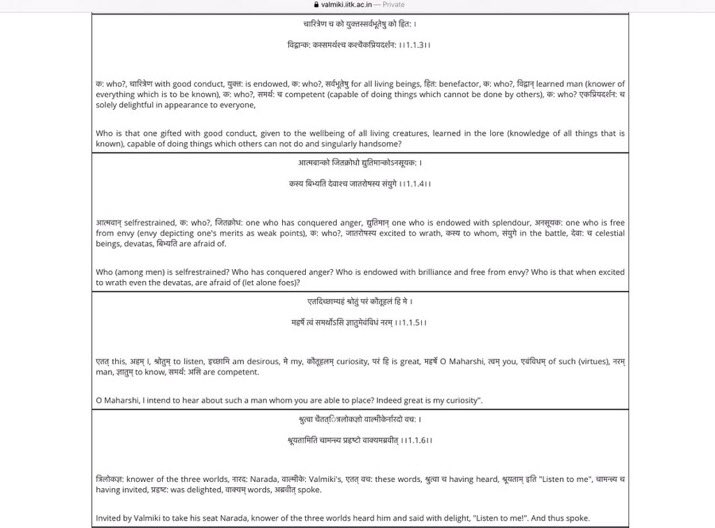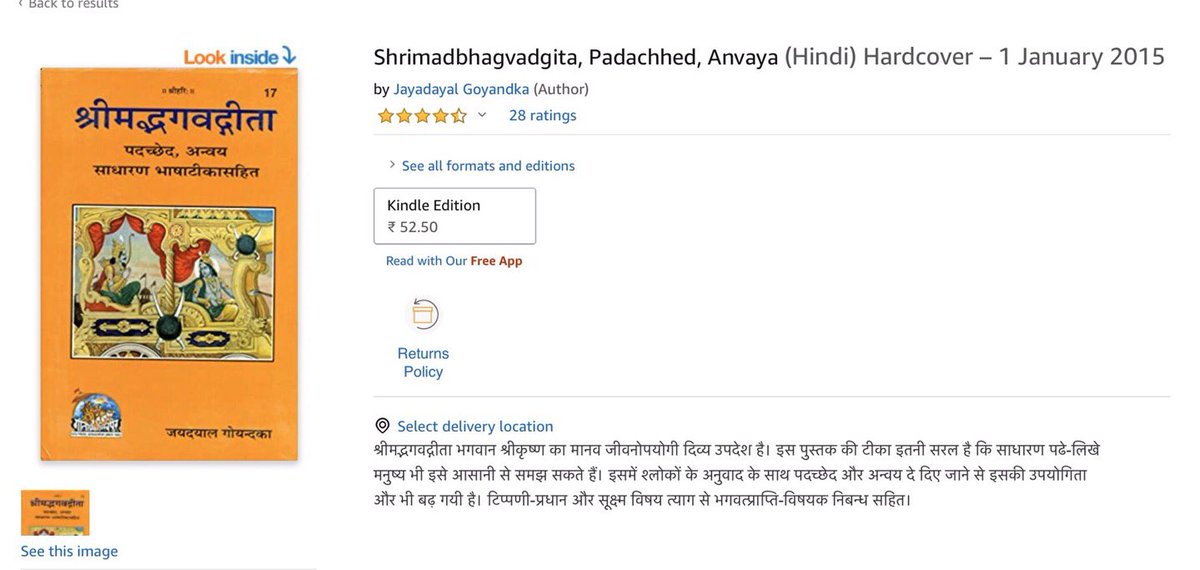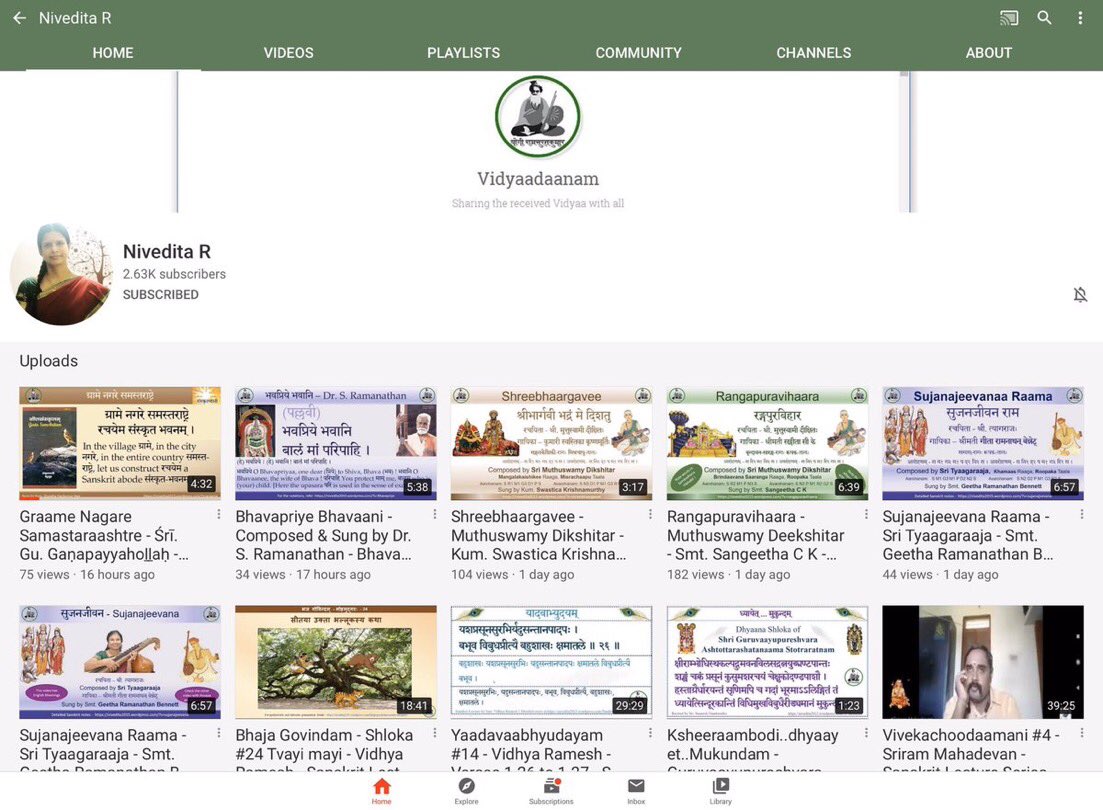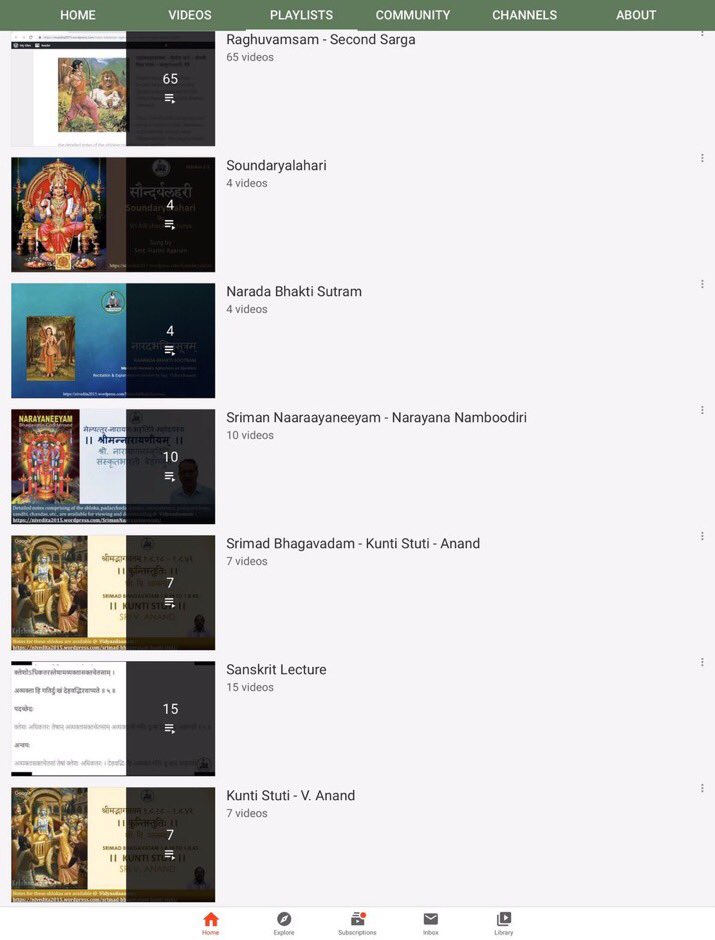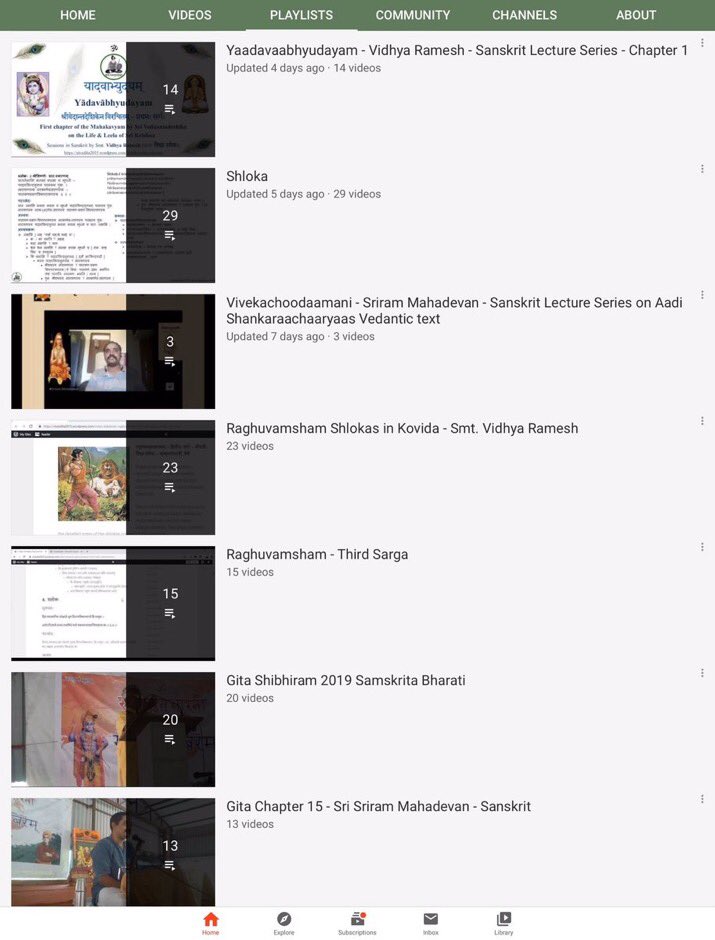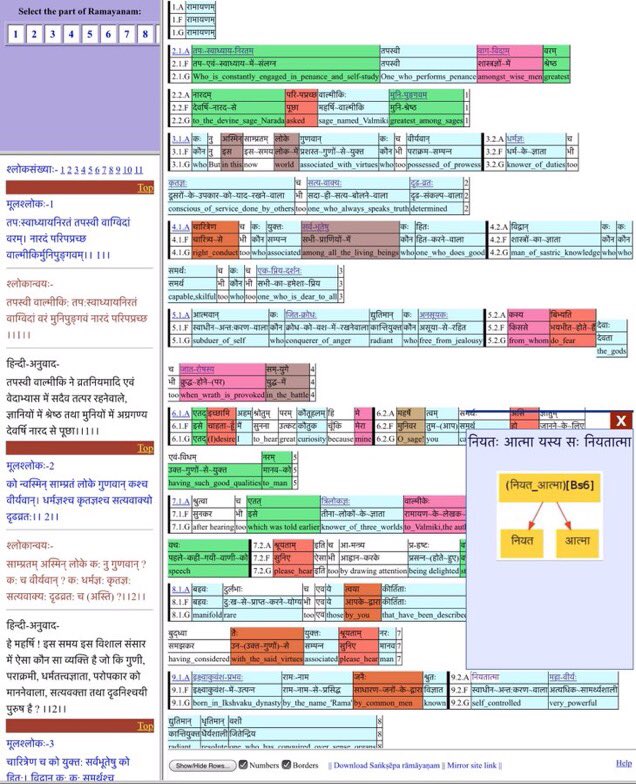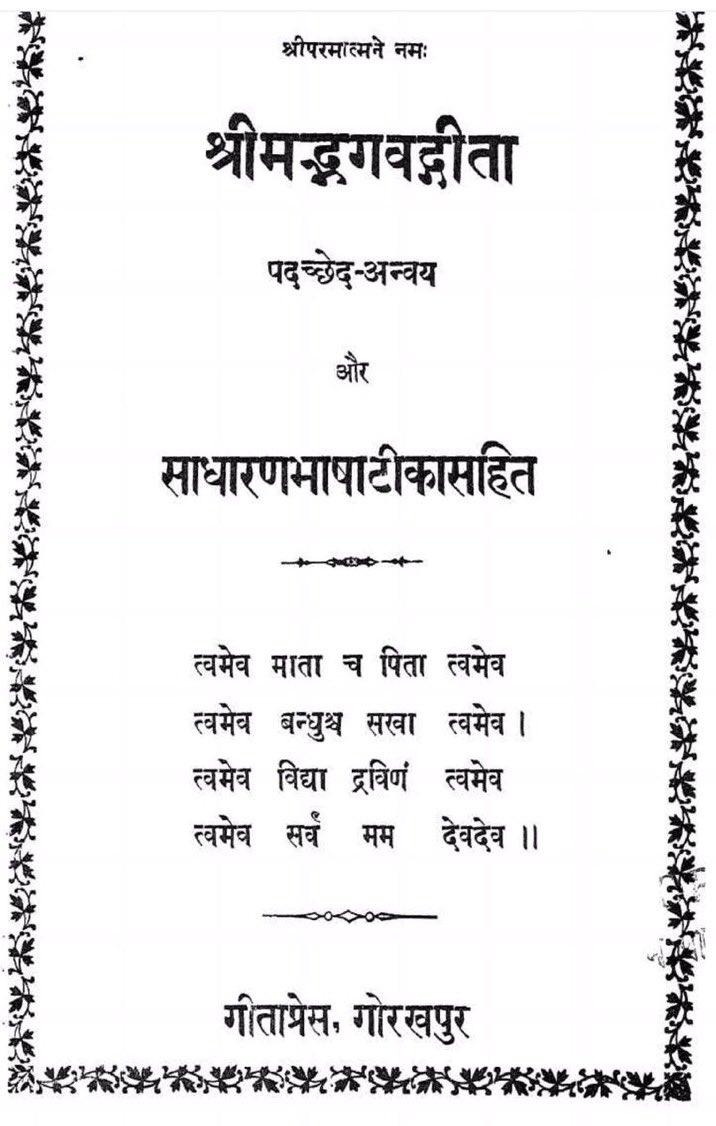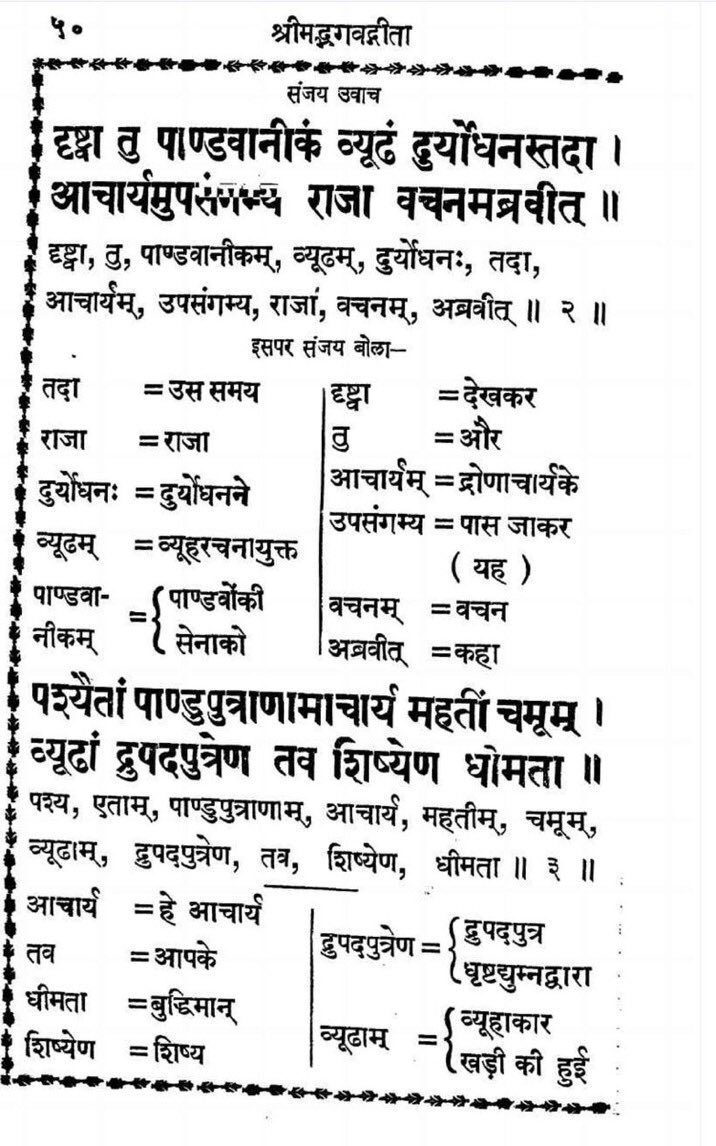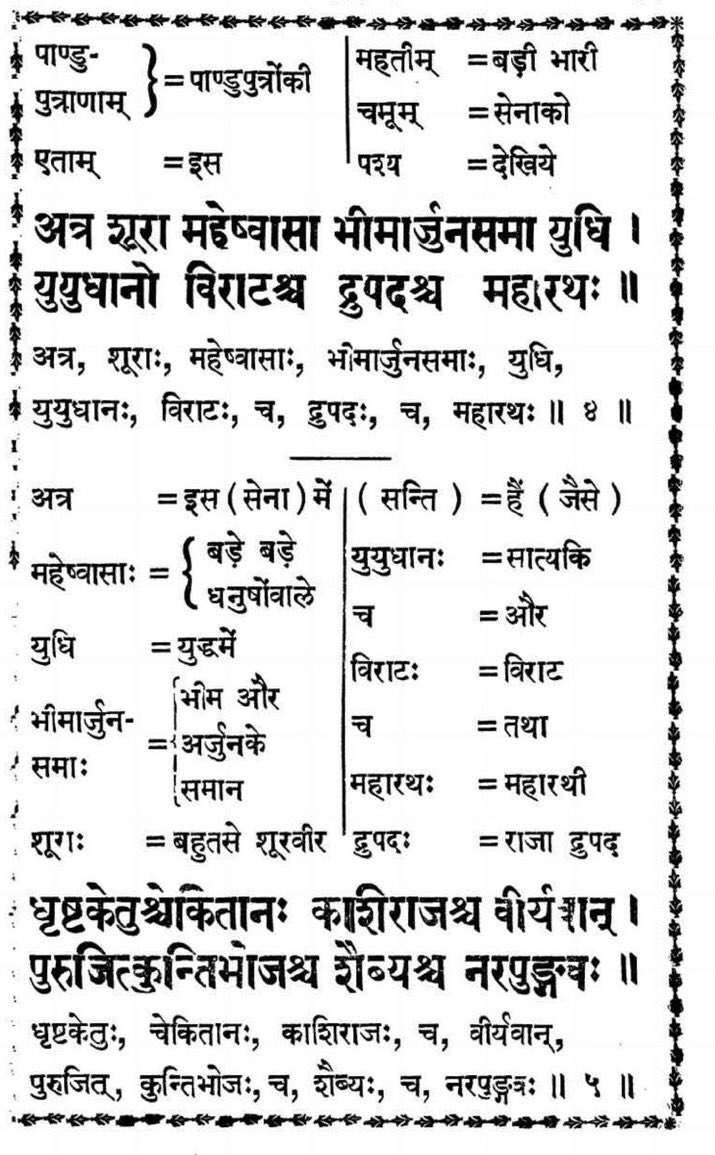How to decode संस्कृत shlokas?
The process is called अन्वयः
The natural order/connection of words in a sentence, reflecting grammatical order or relation - पदानां परस्पराकाङ्क्षा योग्यता च।
Once you learn basics of संस्कृतम्, Anvaya knowledge is critical to your progress
The process is called अन्वयः
The natural order/connection of words in a sentence, reflecting grammatical order or relation - पदानां परस्पराकाङ्क्षा योग्यता च।
Once you learn basics of संस्कृतम्, Anvaya knowledge is critical to your progress

Why is Anvaya process critical?
Shlokas are often written ‘scrambled’ in order to meet metrical (छन्दस्) requirements
While word order does NOT matter in संस्कृतम्-unzipping in the correct manner is critical to get the meaning
Anvaya provides the rules to unzip the Shloka
Shlokas are often written ‘scrambled’ in order to meet metrical (छन्दस्) requirements
While word order does NOT matter in संस्कृतम्-unzipping in the correct manner is critical to get the meaning
Anvaya provides the rules to unzip the Shloka
Anvaya process has multiple steps
१ पदविभागः। Break up words
२ सन्धिः। Break up unions
३ वाक्यविश्लेशणम्। Characterize words
४ आकाङ्क्षाक्रमेण अन्वयः। Unzip in sequence
५ व्याकरणांशाः। Grammatical analysis
१ पदविभागः। Break up words
२ सन्धिः। Break up unions
३ वाक्यविश्लेशणम्। Characterize words
४ आकाङ्क्षाक्रमेण अन्वयः। Unzip in sequence
५ व्याकरणांशाः। Grammatical analysis
Example
वसुदेवसुतं देवं कंसचाणूरमर्दनम्।
देवकीपरमानन्दं कृष्णं वन्दे जगद्गुरुम्
How do we unpack this shloka?
By following Anvaya process!
End result
वसुदेवसुतं देवकीपरमानन्दं कंसचाणूरमर्दनं जगद्गुरुं देवं कृष्णम् (अहं) वन्दे।
वसुदेवसुतं देवं कंसचाणूरमर्दनम्।
देवकीपरमानन्दं कृष्णं वन्दे जगद्गुरुम्
How do we unpack this shloka?
By following Anvaya process!
End result

वसुदेवसुतं देवकीपरमानन्दं कंसचाणूरमर्दनं जगद्गुरुं देवं कृष्णम् (अहं) वन्दे।
What are the steps?
१ Break up words & sandhis
२ Identify the verb (क्रियापदम्)
३ Group all “same vibhakti” words
४ Ask ‘questions’ in sequence to each of the words to find their ‘relation’ to the verb
Questions-किम् केन कस्मै कस्मात् कस्य कस्मिन् -who, what, for whom etc
१ Break up words & sandhis
२ Identify the verb (क्रियापदम्)
३ Group all “same vibhakti” words
४ Ask ‘questions’ in sequence to each of the words to find their ‘relation’ to the verb
Questions-किम् केन कस्मै कस्मात् कस्य कस्मिन् -who, what, for whom etc
Putting together the ‘answers’ generated, in logical sequence, gives you the anvaya!
Isn’t it brilliant?
Isn’t it brilliant?
Now
Why group vibhaktis?
Because
यल्लिङ्गं यद्वचनं या च विभक्तिर्विशेष्यस्य
तल्लिङ्गं तद्वचनं सा च विभक्तिर्विशेषणस्यापि
The gender, number & case of विशेषण follows विशेष्य in संस्कृतम्!
Here words in द्वितीया are all adjectives for Krishna!
[To Krishna WHO IS..]
Why group vibhaktis?
Because
यल्लिङ्गं यद्वचनं या च विभक्तिर्विशेष्यस्य
तल्लिङ्गं तद्वचनं सा च विभक्तिर्विशेषणस्यापि
The gender, number & case of विशेषण follows विशेष्य in संस्कृतम्!
Here words in द्वितीया are all adjectives for Krishna!
[To Krishna WHO IS..]
Why ask questions?
Because, each sentence has ONE verb
विभक्ति shows the relationship between the words and THE verb
प्रथमा-Who?
द्वितीया-To whom?
त्रितीया-By whom?
By asking questions in a sequence, we fully interrogate the relationship between the verb & constituent words!
Because, each sentence has ONE verb
विभक्ति shows the relationship between the words and THE verb
प्रथमा-Who?
द्वितीया-To whom?
त्रितीया-By whom?
By asking questions in a sequence, we fully interrogate the relationship between the verb & constituent words!
Start now to master the Anvaya process!
Here are a list of wonderful resources to help you develop and hone your Anvaya skills

Here are a list of wonderful resources to help you develop and hone your Anvaya skills

To formally learn the Basic Anvaya method & process in a structured manner, nothing better than the Shiksha lectures by Sowmya Krishnapur Bhagini
Start from video 1 - 10 minutes
Here she explains in detail the Anvaya process & runs through many examples https://youtube.com/playlist?list=PLmozlYyYE-ETly_Ngqtg601fX7_bDMMbn
Start from video 1 - 10 minutes
Here she explains in detail the Anvaya process & runs through many examples https://youtube.com/playlist?list=PLmozlYyYE-ETly_Ngqtg601fX7_bDMMbn
The Ramayana & Bhagavad Gita Supersites by IIT Kanpur are SUPERB to learn & practice how to read scriptures
http://valmiki.iitk.ac.in
http://gitasupersite.iitk.ac.in
They have anvaya, translations etc and are brilliant resources for self learning
http://valmiki.iitk.ac.in
http://gitasupersite.iitk.ac.in
They have anvaya, translations etc and are brilliant resources for self learning
Please check out this wonderful course by Vidwan Tilak M Rao to learn more about “Anvaya”, the technique of unpacking संस्कृत shlokas
Many people learn संस्कृतम् to know more about the shlokas - anvaya is the critical process key! https://youtube.com/playlist?list=PLsyIVjh3EwbdaDASf98fod0WTRMFBio26
Many people learn संस्कृतम् to know more about the shlokas - anvaya is the critical process key! https://youtube.com/playlist?list=PLsyIVjh3EwbdaDASf98fod0WTRMFBio26
To ‘read scriptures’ & kaavya, purana etc., nothing substitutes self-practice. This is the MOST critical step
Buy Gita Press Bhagavad Gita with anvaya & padachcheda or Ramayana with anvaya and practice directly. Chaukhamba also has wonderful editions
Very important!
Buy Gita Press Bhagavad Gita with anvaya & padachcheda or Ramayana with anvaya and practice directly. Chaukhamba also has wonderful editions
Very important!
Nivedita Bhagini runs a great youtube channel with multiple free courses & lectures - Vidyadaanam
https://youtube.com/playlist?list=PLTWf5ZhGT360R4RShP8tUAoOhkhLlFdii
These are very useful to learn the process of Anvaya by understanding the examples - critical to develop the ability to read scriptures
https://youtube.com/playlist?list=PLTWf5ZhGT360R4RShP8tUAoOhkhLlFdii
These are very useful to learn the process of Anvaya by understanding the examples - critical to develop the ability to read scriptures
A wonderful resource to learn basic Anvaya is the Sangkshepa Ramayanam by UoHyd
1. First chapter of Ramayana with word by word English / Hindi translation
2. Anvaya with Hindi अनुवादः।
2. Relevant Karaka / Samasa also shown
http://sanskrit.uohyd.ac.in/scl/e-readers/sankshepa_ramayanam/index.html
1. First chapter of Ramayana with word by word English / Hindi translation
2. Anvaya with Hindi अनुवादः।
2. Relevant Karaka / Samasa also shown
http://sanskrit.uohyd.ac.in/scl/e-readers/sankshepa_ramayanam/index.html
If you know Hindi, would also strongly recommend
S̄rimadbhagabadgīta : padacheda-anvaya aur sādhāranabhasātīkāsahita
By @GitaPress
S̄rimadbhagabadgīta : padacheda-anvaya aur sādhāranabhasātīkāsahita
By @GitaPress
If you learn better by listening and also via auditory teaching, a great resource for learning Anvaya would be the Gita classes by Dr. Padmakumar. Here he focuses on you learning grammar in a more natural fashion via learning the Gita https://youtube.com/playlist?list=PL08hAu-sC-B7ND7lNtgyox_1c0ipa-X_A
Adding Sanskrit Appreciation Hour Twitter Sessions incorporating Anvaya by @PnNamboo महोदयः।
Very useful for many folks looking at this type of teaching approach
http://sankhya-n-yoga.blogspot.com/2015/01/sanskritappreciationhour-devi-mahatmyam.html
Very useful for many folks looking at this type of teaching approach
http://sankhya-n-yoga.blogspot.com/2015/01/sanskritappreciationhour-devi-mahatmyam.html

 Read on Twitter
Read on Twitter

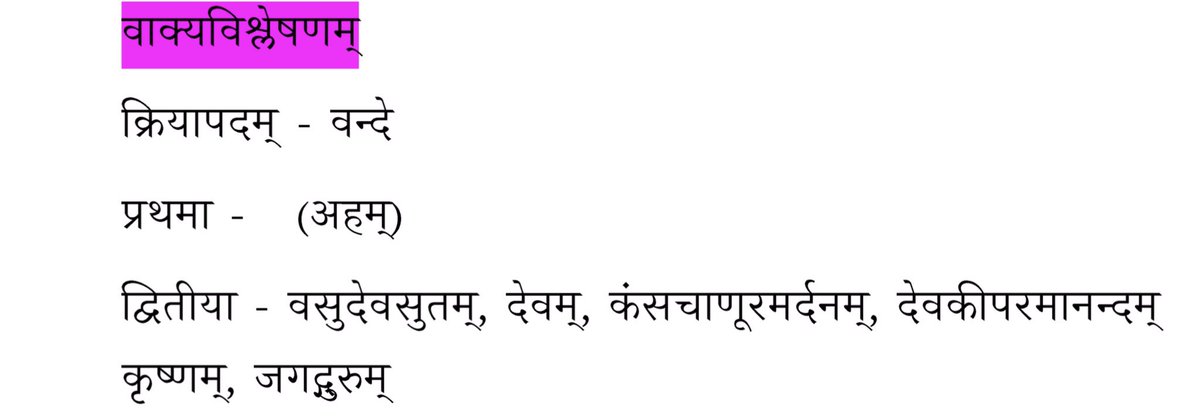
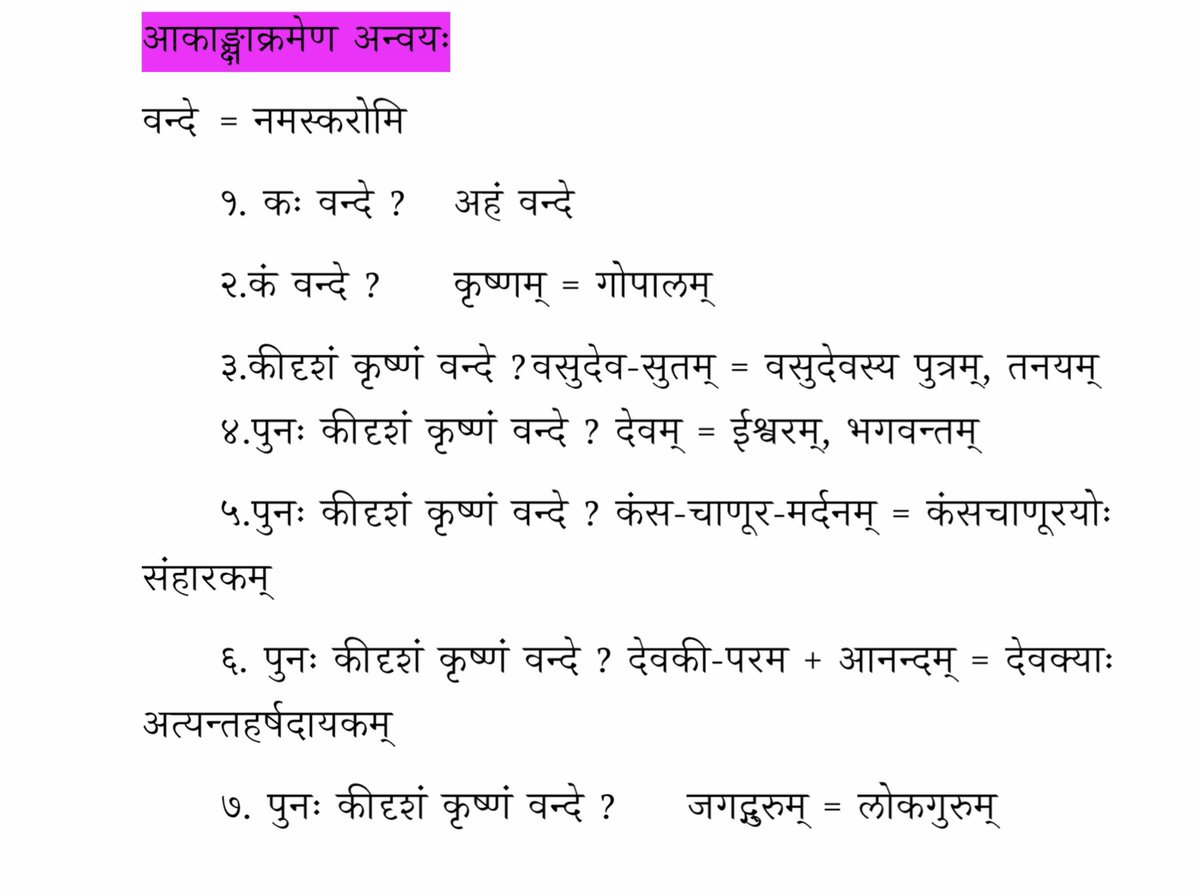

![NowWhy group vibhaktis? Becauseयल्लिङ्गं यद्वचनं या च विभक्तिर्विशेष्यस्यतल्लिङ्गं तद्वचनं सा च विभक्तिर्विशेषणस्यापिThe gender, number & case of विशेषण follows विशेष्य in संस्कृतम्!Here words in द्वितीया are all adjectives for Krishna! [To Krishna WHO IS..] NowWhy group vibhaktis? Becauseयल्लिङ्गं यद्वचनं या च विभक्तिर्विशेष्यस्यतल्लिङ्गं तद्वचनं सा च विभक्तिर्विशेषणस्यापिThe gender, number & case of विशेषण follows विशेष्य in संस्कृतम्!Here words in द्वितीया are all adjectives for Krishna! [To Krishna WHO IS..]](https://pbs.twimg.com/media/Er8DzyGW8AEucPa.jpg)

